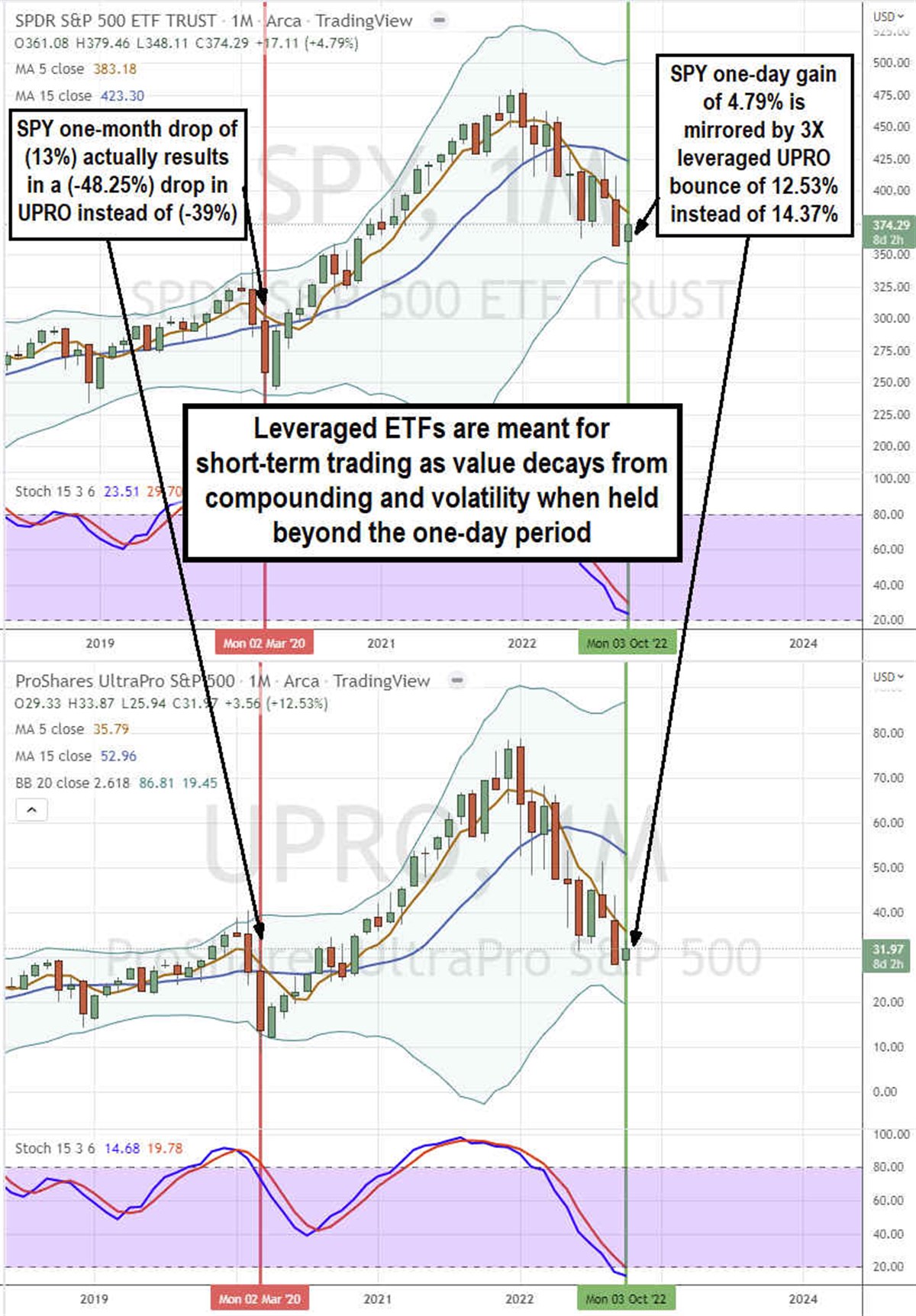Introduction:

Image: www.pinterest.com
In today’s fast-paced financial landscape, investors are constantly seeking innovative strategies to augment their returns. One such strategy that has gained traction in recent years is trading leveraged ETFs using weekly options. Leveraged ETFs are exchange-traded funds that employ leverage to amplify underlying market movements, potentially providing traders with magnified profits. By leveraging weekly options, traders can further enhance their exposure to market volatility and capitalize on short-term price fluctuations.
Understanding Leveraged ETFs:
Leveraged ETFs are investment vehicles that provide investors with a way to magnify exposure to a particular index or asset class. They utilize financial instruments such as futures contracts or swaps to achieve this leverage. Leveraged ETFs are typically categorized as either ‘bullish’ or ‘bearish’. Bullish leveraged ETFs aim to amplify returns when the underlying index or asset price rises, while bearish leveraged ETFs seek to do the same when prices decline.
Mechanics of Trading Weekly Options:
Weekly options are options contracts that expire every Friday, providing traders with the flexibility to trade short-term market movements. Unlike traditional monthly options, weekly options have a shorter time to expiration, which can increase the volatility and potential profitability of the trades.
When trading weekly options on leveraged ETFs, traders can buy or sell call (bullish) or put (bearish) options contracts. If the trader believes the ETF’s price will rise, they can buy a call option. Conversely, if they anticipate a price decline, they can sell a put option. The premium paid or received for the option represents the potential profit or loss on the trade.
Advantages of Trading Leveraged ETFs Using Weekly Options:
Combining leveraged ETFs with weekly options offers several advantages to traders:
- Increased Leverage: Weekly options provide additional leverage to leveraged ETFs, allowing traders to amplify their market exposure even further.
- Short-Term Flexibility: Weekly options’ shorter expiration cycle enables traders to adjust their trades more frequently, capitalizing on fleeting market fluctuations.
- Limited Risk: Unlike holding the underlying leveraged ETF indefinitely, trading weekly options limits potential losses to the premium paid/received.
Considerations:
While leveraged ETF trading using weekly options can offer numerous benefits, it also comes with certain considerations:
- Volatility: Weekly options are highly volatile and can amplify both potential gains and losses.
- Decay: The time value of options decays rapidly towards expiration, particularly for weekly options. This means premiums can decrease quickly, potentially eroding profits.
- Trading Costs: Trading weekly options can involve higher trading fees compared to traditional options or ETFs.
Conclusion:
Leveraged ETFs in conjunction with weekly options present traders with a powerful strategy to capitalize on short-term market fluctuations. By leveraging the combination of these financial instruments, traders can potentially amplify profits and enhance market exposure. However, it is essential to understand the inherent risks involved and trade with caution. By carefully considering their trading strategies and managing their risk exposure, traders can harness the potential of this strategy to achieve their financial goals.

Image: seekingalpha.com
Trading Leveraged Etfs Using Weekly Options

Image: www.entrepreneur.com






